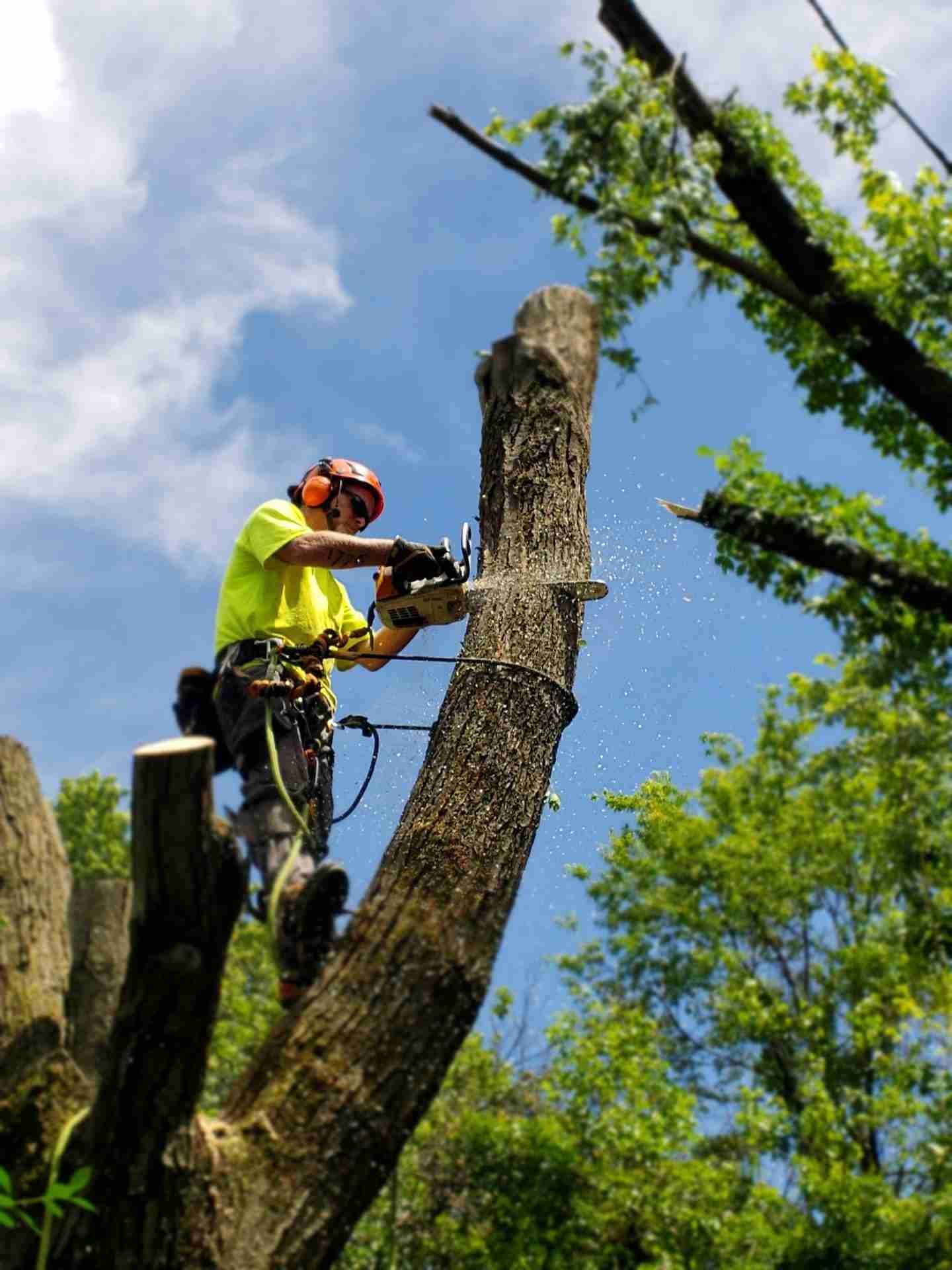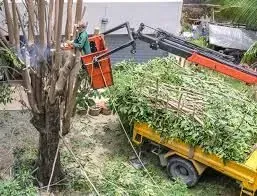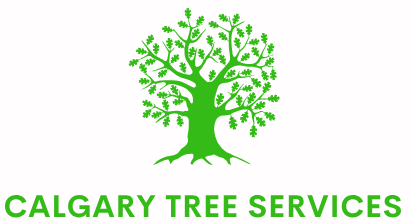Calgary Tree Services
Tree Removal
The process of removing trees is a hazardous and difficult procedure that requires careful and advanced planning and consideration. There are several factors to take into consideration before removing a tree, including its location, size, and type of tree. It's extremely easy for tree removal to result in significant property damage or even injury if the proper measures aren't taken. If your goal is to have the trees on your property cut down by certified experts, contact us today.
Trees can either be removed for a particular reason or merely for aesthetic purposes. Safety concerns,
land clearing, damage to property, or a desire for more sunlight and space might all be responsible for why you searched 'tree removal near me'. Before hiring a company to remove a tree, it is important to ask the right questions. What type of equipment do they have? Is the crew experienced in removing trees? Do they take proper precautions for the tree removal process? The best tree removal companies in Calgary will be able to answer these questions and much more. When you are looking for a company, ask for references and call them up to see how their experience with their certified arborist went. We are happy to provide any references that you require so that we can show you that we really are the best
tree service in Calgary

Get Instant Quote
Contact Us
We will get back to you as soon as possible.
Please try again later.

Importance of Timely Tree Removal
Tree cutting is a complex task that requires the expertise of professionals. Hiring an experienced arborist who can assess the tree's condition and determine the best action is very important. Several reasons a tree might need removal include disease, damage, overgrowth, and proximity to structures. When trees grow too close to a house, they can cause damage to the roof or walls and even lead to foundation problems. Trees that are too close to power lines can also be a significant hazard, as they can cause power outages or even electrical fires.
Trees that are infected with diseases or infested with insects can weaken and become hazardous to people and property. Similarly, trees damaged by storms or other natural disasters can significantly pose a risk and must be removed immediately.
Our Expert Tree Removal Process
The tree cutting process typically involves cutting the tree down in sections with chainsaws, starting at the top and working down. This is done to prevent damage to surrounding property and ensure the safety of our crew and others in close proximity. Once the tree is down, we remove the stump and any remaining debris, leaving the site clean and free of hazards. We're able to grind down every tree we cut with our wood chipper! For larger jobs, we have heavy-duty cranes and pulleys to hoist trees away quickly. Some jobs may require a crane to remove massive trees more efficiently.
Never Settle for Cheap Tree Removal
It should be of no surprise that tree removal is extremely dangerous and should only be attempted by licensed and insured professionals. All of our arborists are trained in the proper techniques and have the necessary equipment to remove trees safely and efficiently. Removing a tree yourself can result in injury or damage to your property, so it's best to leave it to the experts, and avoid unnecessary medical bills. Never settle for an estimate just because its the lowest bid. You run the risk of further damage to your property and may be held liable if they're not insured and don't have the proper licensing. Rest assured, Calgary Tree Services has all the necessary licensing to get the job done right. We work hard to deliver the best tree removal possible, leaving your property completely free of debris!
Can you plant a tree in the same spot where one was just removed?
You can, but we wouldn’t recommend it!
if a previous tree was removed because of a pest or disease, it may spread to a new tree planted in the same spot.
The roots from the removed tree can make it hard for a new tree to grow, as space, oxygen, and water are limited. There tends to be more nitrogen in the soil around the roots of a removed tree, which can harm a new tree planted in the same spot.
The area close to where a tree used to be will probably have fewer nutrients available in the soil, as the tree would have used those nutrients to grow.
If you had your stump ground, many of the roots will still be intact and the woodchips and sawdust can add additional nitrogen to the soil, making it difficult for a new tree to grow.
Can you plant a tree NEAR where one was recently removed?
Yes, as long as it is planted a distance away. We recommend at least 6 to 8 feet, but keep in mind that a tree’s roots are often as wide (or wider) as a tree is tall.
Should I use the woodchips from a ground stump in a new tree’s planting hole?
No. While we recommend the use of wood chips (from tree branches and limbs) as mulch placed around the tree after it is planted, adding the sawdust from the stump grinding to the planting hole could change the nutrient level of the soil, adding more nitrogen and causing issues.
What if the tree roots were removed along with the tree?
In some cases, such as when a tree is uprooted during a storm or high winds, the roots are removed along with the tree. While that makes the planting area slightly more hospitable for a new tree, the soil will still be depleted of nutrients. Plus, whatever caused the previous tree to uproot (such as root rot due to poor drainage) might impact a newly planted tree as well.
If pests and diseases made the previous tree weaker and more likely to fall, they will likely infect a new tree planted in the same spot. Overall, we don’t recommend planting in the same spot as a previous tree.
What if there is no other spot to plant a tree?
If there is no other option, know that your newly-planted tree will have to overcome some obstacles and will need specific and additional care to survive. Some of the things to keep in mind include:
You will need to remove all old roots (or as many as you possibly can) and any other remaining part of the previous tree (including any sawdust from stump grinding). Roots take 20 or more years to decompose naturally.
If your tree was removed due to a pest or disease, choose a replacement tree that is not susceptible to that same issue. Native trees, when properly planted and cared for, are more likely to survive than other types of trees.
Consider planting a shrub, installing perennial plants, or using a large potted plant instead of planting a news tree.
Remove the old soil from the area and add compost and new soil to the planting area to increase the nutrients available for your new tree.
What are some alternatives to planting a new tree in the same spot as one that was removed?
Plant a shrub or plant that won’t mind extra nitrogen in the soil. These plants are often referred to as “nitrogen fixing plants” and can be found at a local nursery.
There are a number of creative ideas for what to do with a tree stump
Instead of removing a dead tree, turn it into a snag for wildlife or into a birdhouse
Level out the area (you’ll likely need to bring in extra soil to fill the hole) and cover it with grass seed or sod.
Work with a landscaper to work around (or with) the stump to make it part of your landscape.
All Rights Reserved | Calgary Tree Services
